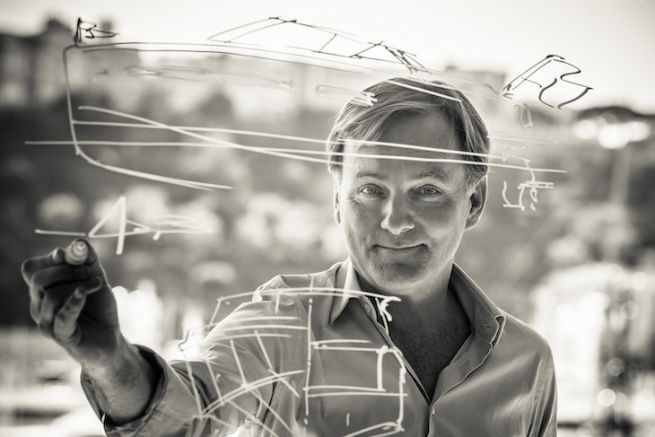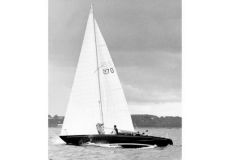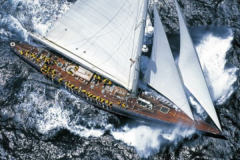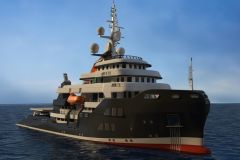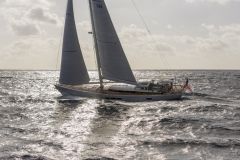Who are you Espen Oeino??
I'm Norwegian. I grew up by the water, I've always sailed with my family and I knew early on that I wanted to be a naval architect. I came to France in second year so I could take my baccalaureate there. I realized that no one in my classes knew about the profession of naval architect. Unlike England or Germany, the French tend to equate this profession with that of a land architect. But that's not the case.
I studied marine engineering in Glasgow, Scotland. I knew that I wanted to work in the yachting industry and particularly in sailing. That was what interested me and it still is. After graduating, I worked on sailing projects until one day the company I was working for had to do a design brief for a motor boat.
Being the only graduate with expertise in speed predictions and structural calculations, I took charge of this project. That's how I specialized on motor yachts.
Now I've been doing this job for 25 years. You could say I'm a frustrated sailboat architect (laughs). At the same time, the powerboat market is bigger, with incredible growth. As much by the number of boats as by the size of the yachts, which has increased incredibly.
What training do you recommend vous??
I recommend technical training. The profession of naval architect in France is not a protected profession as are doctors, dentists or architects. But the profession of marine engineer is. There are many naval architects who make their own boats and it is a way of working, but when designing larger boats, it is essential to have a good technical basis. This allows you to have a global view of things and not only from a design point of view. We study hydrodynamics, engines, structures, etc., and then we look at the whole boat. You have to know how a boat works to design it.
Then you have to have creative abilities. The ideal is to combine engineering and architectural studies. Because the objective is to optimise confined spaces for life on board.
I like to study the distribution of spaces, the interior of a boat to find the optimal configuration. So you need to have an interest in creating layouts and spaces and a technical interest to be a good yacht designer.
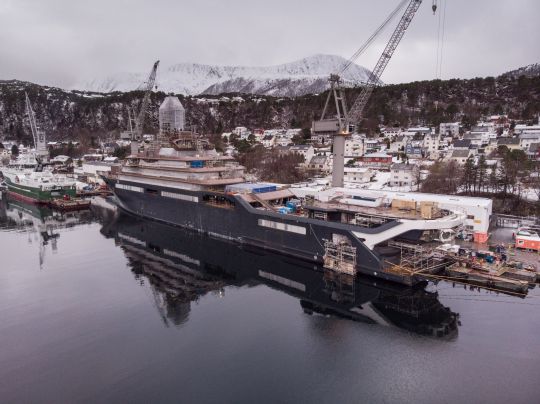
What is the job of naval architect and designer at superyacht??
It's a job that's a little unknown in France. However, it is the country of pleasure boating, with numerous manufacturers of sailing boats and production boats.
I mainly draw displacement yachts, from 60 m. Our latest current project is 183 m long. I have also made some 35 m speedboats. Today, I have 26 employees in my company, including a 5-person department for small planing hull boats, which are mainly tenders for superyachts.
At the beginning of the year, we also presented our first production boat for the Norwegian Windy shipyard, the Shamal 37. We'd already worked with them as they also build top-of-the-range customised tenders.
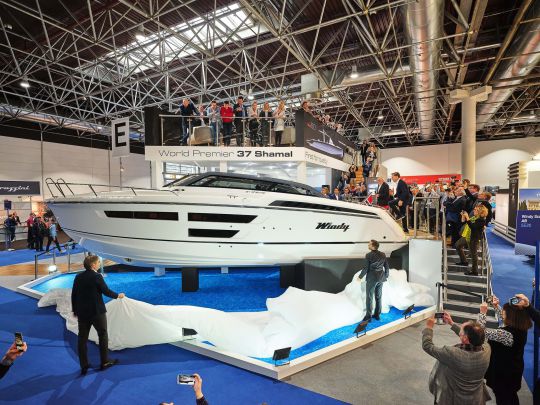
You also draw the inside of bateaux??
We create the spaces and the relationship between the spaces (windows, stairs, doors...), but we do not do the decoration. We study the structural continuity, the positioning of watertight bulkheads... We always start by drawing a boat from the inside to the outside. On the other hand, we do the exterior decoration of the boat.
Are the projects still linked to commandes??
Usually is. I create custom boats. Clients come in through friends, the press or brokers. Sometimes they are also recommended by a shipyard for which we have already designed boats.
Finally, it's also a job in psychology. There has to be an agreement between the naval architect and the client. We study his program, we define a set of specifications. It's important to fully understand what he wants and to clarify his ideas.
I am in contact with my clients, from the drawing up of the specifications to the delivery of the boat. And often long afterwards, since for an individual client, I am designing his 6th boat. The superyacht Bold is the 5 e boat I design for the same owner.
For most of these owners, this is a very personal project. It is not about building a new plant or making a financial investment. They are passionate about it and we organize meetings on weekends or in the evenings, outside working hours. For most of them, this is the most expensive personal project they do.
Large yachts cost several hundred million euros. That's much more expensive than a house, a castle or a cottage. Clients follow this project very closely. It's fun and friendly. Often a friendly relationship is created between us. I see myself as someone who holds the pen for them.
The Bold is the N° 50 yacht we designed, not including the tenders. They're all quite different. It has to do with the fact that I design my clients' boat, not my own. I don't have my own style, I respect the clients' style while making sure the proportions are right. It's not just a question of design, it has to be good boats at sea.
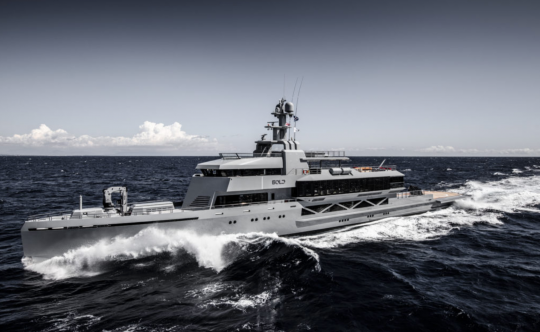
What is your realization préférée??
I'm gonna say like Enzo Ferrari, next. There's some truth to that since REV the one being developed, excites us the most. It will be even bigger than Azzam ( NDLR the largest yacht in the world with a length of 180 m) since we think in volume (tonnage) when we talk about superyachts, and not in size. Azzam is narrow and not very voluminous with a volume of 13?000 barrels. REV is a steel displacement yacht of 17?400 tons, designed to sail in the Arctic and Antarctic.
There are also 2 or 3 boats that helped me make a name for myself, designed for two people who worked at Microsoft. Octopus is my first exploration. It was quite a complex program and at the time, it was one of the biggest yachts in the world at the time.
There is also the Skat delivered in 2002, built in aluminium and steel, like most of these big yachts. People either hated it or loved it. And this is interesting. I was proud and happy. It's one of the most invoked yachts in the world. I designed it for a mathematician, a Word and Excel designer, who wanted a boat made of aluminium, but with respect to the material, delivered in plate and profile. So, apart from the hull - for hydrodynamic reasons - the whole structure is made of flat surfaces that intercept each other. Today we talk about stealth boats, but at the time it was something new. It's a timeless boat.
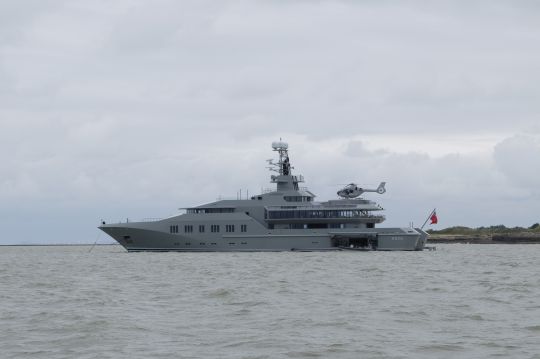
I also like the Bold one of the world's largest aluminium yachts, launched in the summer of 2019, which has an efficient performance. It is a boat with a volume distributed in the longitudinal plane rather than vertically. As a result, the midship beam is reduced and the weight is lighter. It is built in aluminium and it is quite narrow, which is beneficial for the resistance to forward motion. It goes fast with fairly modest power engines. It needs only 60% of the power of a boat of equivalent size (77 m). It is one of the largest aluminium yachts in the world.
It's the fifth boat I've designed for the same owner. I've already designed two 73m and two 77m boats for him. The Bold is completely different from the others and even from the concept of the aluminium hull. It's a more ecological boat, and the aluminium is recyclable.
What would you like to see dessiner? achieve?
My boat at moi?! The shoemaker is always the worst shoemaker. I've had a dream for a long time, but I can never find the time to make it come true. I've made sketches of my own little boat. It's a snow ski boat. I've already had a chance to make one with the Cloudbreak.
I can't afford a yacht like this one, but I love skiing, which I do all the time. My personal project is a motor catamaran of about fifteen metres, because I need speed, because the distances are important. Norway with its incredible coastline has very jagged coastlines, from the Swedish border to the Russian border. With its fjords, islands and mountains plunging into the fjords, there are finally about 20?000 km to explore.
I need a boat that goes at 30 knots, an all-season boat, with heating, an interior and exterior cockpit, but also a dinghy and a ramp at the bow so I can land on the rocks and put the skis ashore.
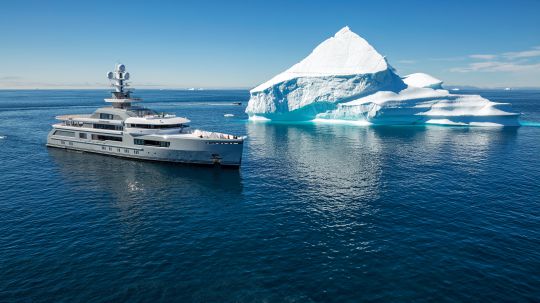

 /
/ 